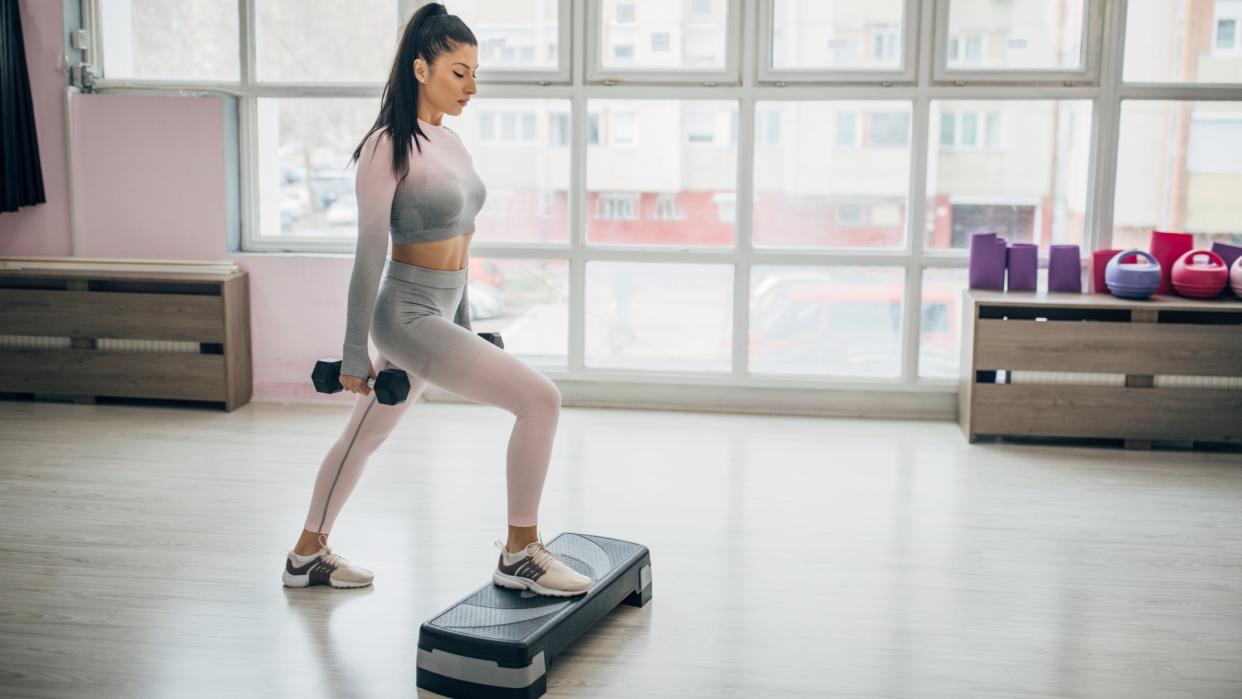Forget the gym — this 20-minute walking workout with weights builds lower-body strength

You just need 20 minutes and this walking workout with weights to burn calories and build strength. We love the gym, but we don’t want to be there all the time, right? I certainly don’t, and sometimes I like to get outdoors for a workout that will increase my step count, build mindfulness and strengthen my cardiovascular system.
This walking workout with weights doesn’t require one of the best treadmills — you can do it outside or using an under-desk treadmill. And simply adding a light load can help strengthen your hips, glutes, legs and core muscles while also engaging your arms and shoulders.
Not all of the best walking workouts need weights, and if you are walking for weight loss for the first time or unfamiliar with walking workouts altogether, consider using your body weight first.
The below workout only takes 20 minutes, but remember that while a 20-minute walk will increase your step count and contribute toward overall energy burn, you’ll need to clock up around 7,000 steps a day or more regularly to really tap into the benefits of walking.
What is the 20-minute walking workout?
How you add weight is entirely up to you. I recommend weighted vests, ankle or wrist weights, a set of dumbbells, the best kettlebells, or even a filled rucksack or water bottles. All are safe options for most people, but if you suffer from joint pain, consider using your body weight or starting very light instead and always avoid running while wearing ankle weights.
20-minute EMOM (every minute on the minute) x 5 rounds:


Minute 1: Farmer’s walk
Minute 2: Walking lunges
Minute 3: Single-arm incline walk
Minute 4: Single-arm decline walk
Use a set of weights that allows you to work for 45-50 seconds unbroken without stopping. During the first minute, perform a farmer’s walk and focus on keeping your spine tall, shoulders down and chest proud. Rest for 10-15 seconds, then on the second minute, hold your weights by your sides or in the front rack position at your shoulders and perform maximum reps of your walking lunges. Give yourself 10-15 seconds recovery.
On the third minute, hold one weight to load one side of the body and begin walking on an incline — a hill, staircase or a treadmill incline works well — and switch sides at 20-25 seconds. You can hold the weight by your side or rack it up to your shoulder. Use the fourth minute to do the same on a decline, again, switching sides halfway through the minute. Repeat five rounds.
Benefits of walking with weights
Walking strengthens the lower body muscles, including your hips, glutes, hamstrings, quads and calf muscles, plus your hip, knee and ankle joints. As we get older, we begin to experience muscle atrophy and bone density loss, so building lower body strength is crucial to maintaining muscle mass. That can be done by lifting weights, but walking also contributes toward osteogenic loading — the process of loading the bones to stimulate growth.
Walking also contributes to the NEAT process, which refers to energy expenditure outside of your workouts, helping you burn calories and boost your metabolism simply by clocking up extra steps throughout the day. And it’s not just your metabolism that gets a boost if you walk more often, it also helps build mental strength and improve emotional wellbeing.
Remember to warm up before your walking workout, moving each muscle group through a full range of motion to help increase blood flow to your muscles.
